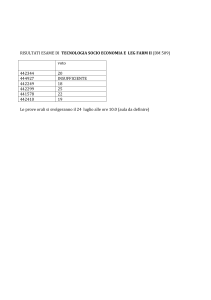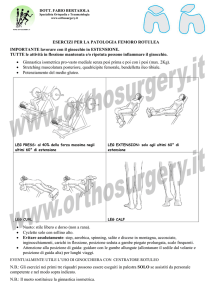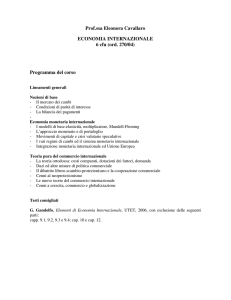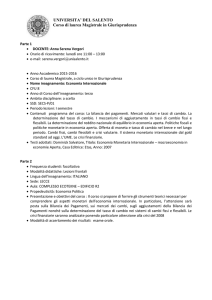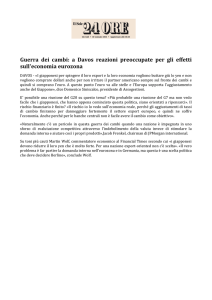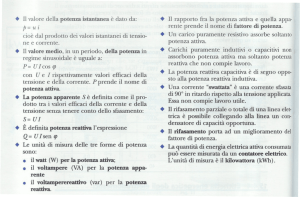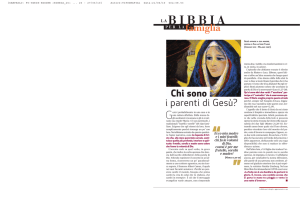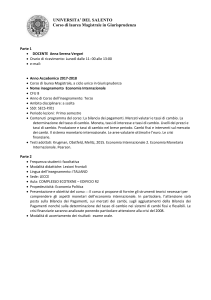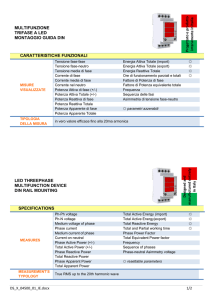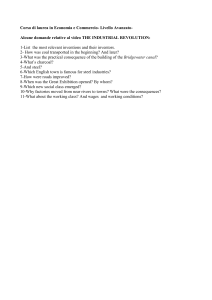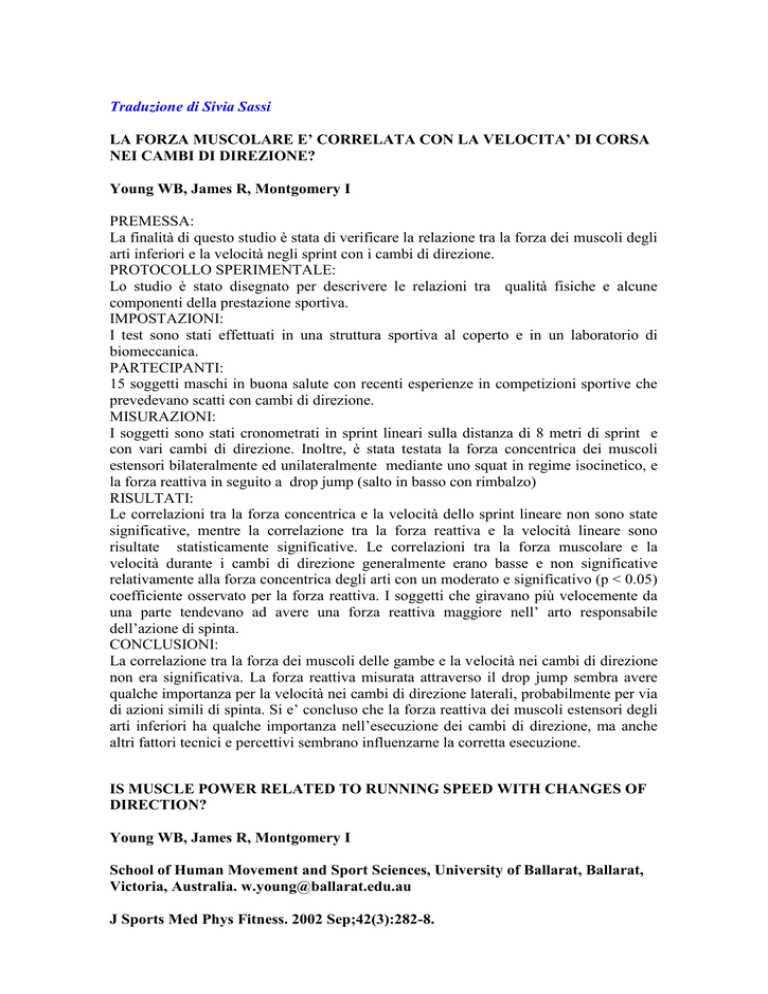
Traduzione di Sivia Sassi
LA FORZA MUSCOLARE E’ CORRELATA CON LA VELOCITA’ DI CORSA
NEI CAMBI DI DIREZIONE?
Young WB, James R, Montgomery I
PREMESSA:
La finalità di questo studio è stata di verificare la relazione tra la forza dei muscoli degli
arti inferiori e la velocità negli sprint con i cambi di direzione.
PROTOCOLLO SPERIMENTALE:
Lo studio è stato disegnato per descrivere le relazioni tra qualità fisiche e alcune
componenti della prestazione sportiva.
IMPOSTAZIONI:
I test sono stati effettuati in una struttura sportiva al coperto e in un laboratorio di
biomeccanica.
PARTECIPANTI:
15 soggetti maschi in buona salute con recenti esperienze in competizioni sportive che
prevedevano scatti con cambi di direzione.
MISURAZIONI:
I soggetti sono stati cronometrati in sprint lineari sulla distanza di 8 metri di sprint e
con vari cambi di direzione. Inoltre, è stata testata la forza concentrica dei muscoli
estensori bilateralmente ed unilateralmente mediante uno squat in regime isocinetico, e
la forza reattiva in seguito a drop jump (salto in basso con rimbalzo)
RISULTATI:
Le correlazioni tra la forza concentrica e la velocità dello sprint lineare non sono state
significative, mentre la correlazione tra la forza reattiva e la velocità lineare sono
risultate statisticamente significative. Le correlazioni tra la forza muscolare e la
velocità durante i cambi di direzione generalmente erano basse e non significative
relativamente alla forza concentrica degli arti con un moderato e significativo (p < 0.05)
coefficiente osservato per la forza reattiva. I soggetti che giravano più velocemente da
una parte tendevano ad avere una forza reattiva maggiore nell’ arto responsabile
dell’azione di spinta.
CONCLUSIONI:
La correlazione tra la forza dei muscoli delle gambe e la velocità nei cambi di direzione
non era significativa. La forza reattiva misurata attraverso il drop jump sembra avere
qualche importanza per la velocità nei cambi di direzione laterali, probabilmente per via
di azioni simili di spinta. Si e’ concluso che la forza reattiva dei muscoli estensori degli
arti inferiori ha qualche importanza nell’esecuzione dei cambi di direzione, ma anche
altri fattori tecnici e percettivi sembrano influenzarne la corretta esecuzione.
IS MUSCLE POWER RELATED TO RUNNING SPEED WITH CHANGES OF
DIRECTION?
Young WB, James R, Montgomery I
School of Human Movement and Sport Sciences, University of Ballarat, Ballarat,
Victoria, Australia. [email protected]
J Sports Med Phys Fitness. 2002 Sep;42(3):282-8.
BACKGROUND:
The purpose of this study was to identify the relationships between leg muscle power
and sprinting speed with changes of direction.
METHODS:
EXPERIMENTAL DESIGN:
The study was designed to describe relationships between physical qualities and a
component of sports performance.
SETTING:
testing was conducted in an indoor sports hall and a biomechanics laboratory.
PARTICIPANTS:
15 male participants were required to be free of injury and have recent experience
competing in sports involving sprints with changes of direction.
MEASURES:
subjects were timed in 8 m sprints in a straight line and with various changes of
direction. They were also tested for bilateral and unilateral leg extensor muscle
concentric power output by an isokinetic squat and reactive strength by a drop jump.
RESULTS:
The correlations between concentric power and straight sprinting speed were nonsignificant whereas the relationships between reactive strength and straight speed were
statistically significant. Correlations between muscle power and speed while changing
direction were generally low and non-significant for concentric leg power with some
moderate and significant (p<0.05) coefficients found for reactive strength. The
participants who turned faster to one side tended to have a reactive strength dominance
in the leg responsible for the push-off action.
CONCLUSIONS:
The relationships between leg muscle power and change-of-direction speed were not
consistent. Reactive strength as measured by the drop jump appears to have some
importance for lateral change-of-direction speed, possibly because of similar push-off
actions. It was concluded that reactive strength of the leg extensor muscles has some
importance in change-of-direction performance but the other technical and perceptual
factors than influence agility performance

